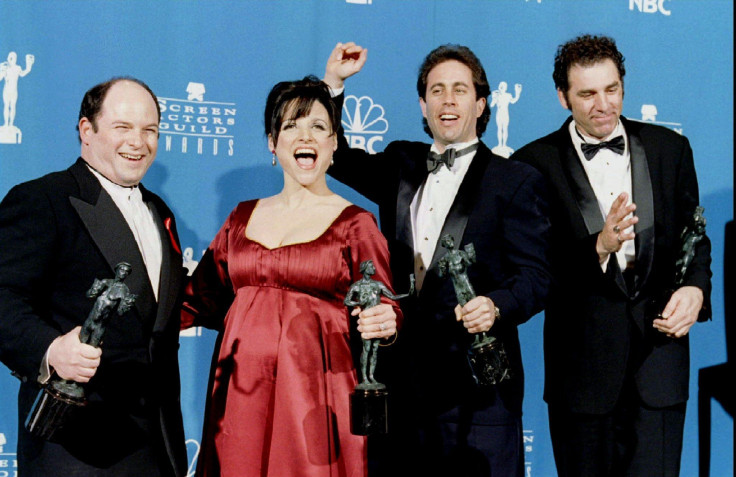What Is Festivus? Everything You Need To Know About Fake 'Seinfeld' Holiday Traditions And Origin [VIDEO]

The year was 1997. “Seinfeld” was in its final season, and it aired an episode entitled “The Strike,” in which the character of George Costanza’s father, Frank, explained how he created a nondenominational holiday called Festivus.
This is how most people who are aware of the holiday of Festivus first learned about it. But the idea for the world’s greatest fake holiday came to “Seinfeld” from a family tradition of one of the show’s writers, Dan O’Keefe, according to FestivusWeb.com. Originally a real-life event thought up by O’Keefe’s father, the holiday gained wide popularity after appearing on “Seinfeld.”
In the years since its introduction to the world, awareness of Festivus has grown, and many people now celebrate the holiday with varying degrees of seriousness. But before we continue, let’s break down the “Seinfeld” origin story of Festivus.
Early in “The Strike” episode, George, Jerry and Elaine were sitting in their favorite diner when Elaine saw the word “Festivus” written on a holiday card that George said he received from his father. George tried to shrug off her questions about what the word means, but Jerry gleefully interrupted with the holiday’s back story.
When George was a kid, his father grew tired of the consumerism associated with other winter holidays, Jerry saed, so he decided to create his own. Jerry added that Frank put up a plain aluminum pole instead of a Christmas tree, and Elaine collapsed with laughter, prompting an upset George to storm out of the diner.
Kramer then heard about Festivus from Jerry and sought out Frank to learn more about the holiday. In a true Costanza rant, Frank tells Kramer the story of how Festivus came to be:
“Many Christmases ago, I went to buy a doll for my son. I reached for the last one they had, but so did another man. As I rained blows upon him, I realized there had to be another way,” he says. After Kramer interjects, Frank finishes his story by declaring: “A new holiday was born: A Festivus for the rest of us!”
Now that you know the origins of the holiday, you may want to celebrate it for yourself. Here are the traditions you’ll need to know to get in on the fun.
Festivus is celebrated annually Dec. 23 and it consists of three parts: Festivus Dinner, Airing of Grievances and Feats of Strength.
Festivus Dinner: In the “Seinfeld” episode, the friends eat meatloaf, but other foods are also acceptable, as long as they create a festive atmosphere. FestivusWeb has a list of suggested foods to include at your dinner.
Airing of Grievances: This happens at the dinner table, where family and friends talk about all the ways they have disappointed each other over the past year. During the “The Strike,” Frank directs his criticism at George’s boss, Mr. Kruger, saying his company “stinks.”
Feats of Strength: Here, the head of the household chooses a family member or friend to challenge in a wrestling match. Festivus only ends when the head of the challenger successfully pins the head of the household.
And, of course, the unadorned aluminum pole serves as the traditional Festivus decoration in any household celebrating the holiday.
© Copyright IBTimes 2024. All rights reserved.












